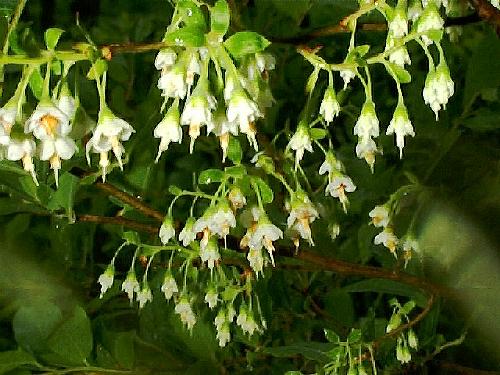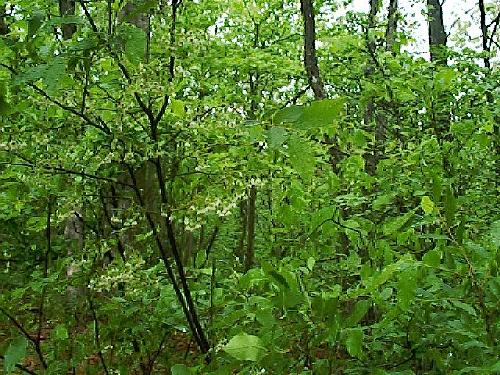

Shrub to 2 m (6 ft) tall. Crown irregular. Bark gray to brown and smooth. Current year's twigs green to red and pubescent, becoming green to brown and glabrous. Leaves alternate, simple; oblong, elliptic, or rounded, 2-6.5 cm (0.8-2.8 in) long and 0.8-2.5 cm (0.3-1 in) wide; veins conspicuous beneath; glabrous above, pubescent beneath; light green and shiny above, dull beneath; cuneate or rounded at base, acute to acuminate at apex, margins entire or ciliate. Flowers in racemes, pedicels long and pubescent, 6-8 mm (0.3-0.4 in) diameter, 5-lobed, 3-5 mm (0.1-0.2 in) long, pubescent; petals 5 with short, rounded lobes, glabrous, white; pistil straight and exserted beyond the stamens; stamens 10; flowers appear from April to June. Fruits berries, about 10 mm (0.4 in) diameter, globose, green to yellow; fruits mature May to September.
NWI status: FAC+
Distribution: Oklahoma and east Texas, east to Georgia, north to Maine, west to Ontario and Minnesota. Uncommon in eastern Oklahoma.
Habitat: moist, sandy, acid soil in the Ouachita Mountains and Ozark Plateau.
Comments: Vaccinium is the classical name for blueberries; stamineum refers to the prominent stamens.
Field identification: deerberry flowers are quite different from other blueberries. The petals are flaring and the stamens and styles are exserted.
Wildlife benefits: fruits are eaten by 14 bird species and several species of mammals.
Distribution in Oklahoma: 
BACK
NEXT
RETURN TO INDEX
Last update: 9/22/99
 Go to Oklahoma Biological Survey Home Page
Go to Oklahoma Biological Survey Home Page
 Disclaimer
Disclaimer